The retired editor of Birds of North America finds a slice of Costa Rica where the regal Resplendent Quetzal has inspired communion among farms and tourist lodges, birds and people.
From the Spring 2023 issue of Living Bird magazine. Subscribe now.
I’m standing on a hillside in the central highlands of Costa Rica, looking up at a tree full of the small wild avocados (aguacatillos, in Spanish) that Resplendent Quetzals are known to rely on for food. Surrounded by a pleasing mosaic of forests and small farms, I’m on the edge of a tiny field—steep but terraced, clearly well tended. The cabbages growing here are magnificent, plump and shiny in the morning sun, and the farmer walking ahead of me, a spry 80-year-old in black rubber boots, reaches down and slices one off with his machete and offers it to me—a gesture of pure generosity.
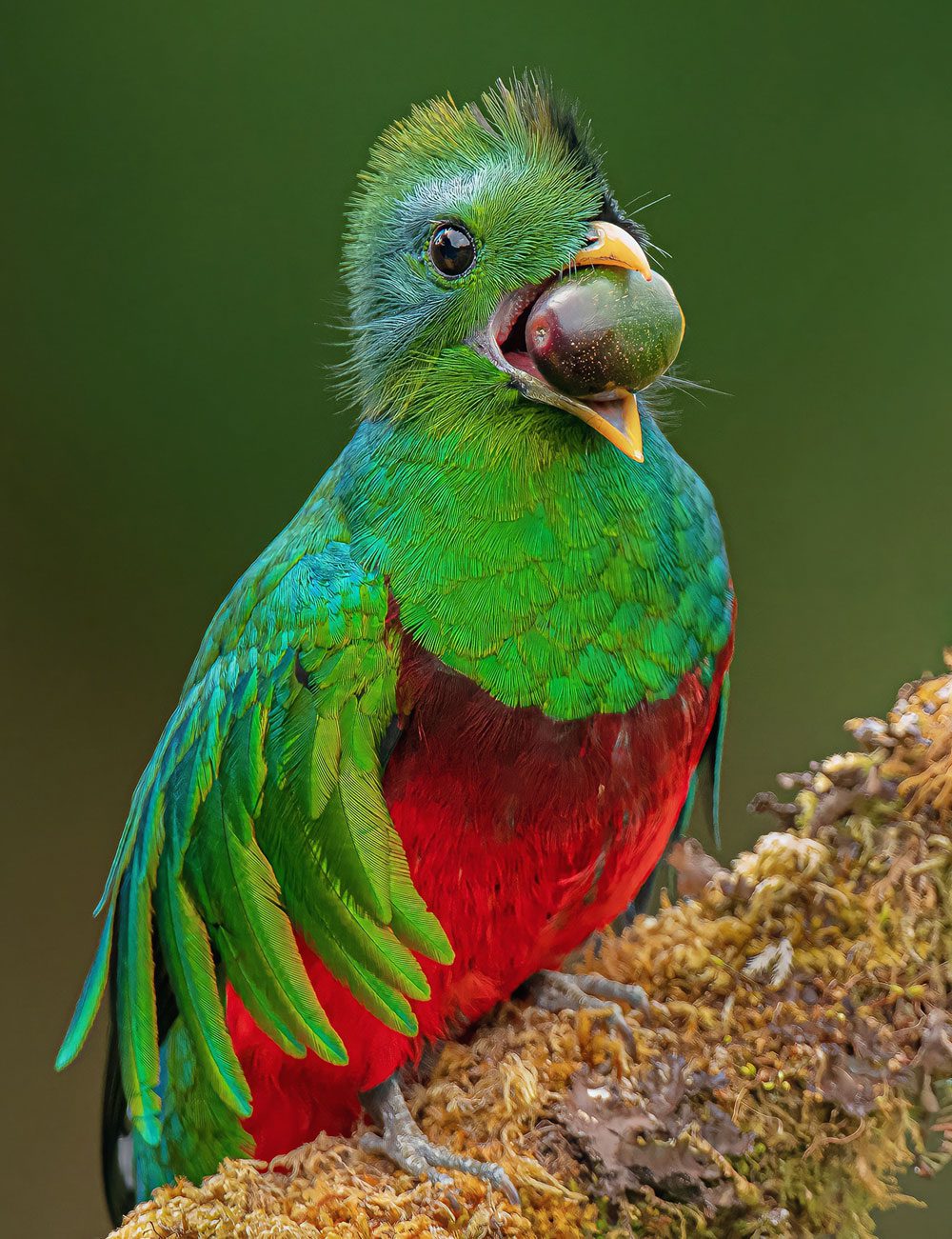
At that very moment, a male Resplendent Quetzal swoops in to a nearby tree, fluttering briefly to snatch a red-stemmed aguacatillo in its powder-yellow bill, and then settles in on a nearby branch to gulp it down. It’s the best look I’ve ever had of a quetzal, each dazzling feather bright and immaculate, its regal gold crest erect, its small black eye fixed on mine, and those impossibly long tail plumes trailing down behind.
Two gifts at once—a person might be forgiven for thinking them unrelated, but for me they fit as one and spoke volumes about what this lovely part of the planet has to offer: productive land, a mix of the wild and the cultivated, nurturing people and wildlife.
The secret here, as carefully tended as that farmer’s fields, has been collaboration, in this case between a local conservation group, a birding lodge, and a community of farmers. Each brought something of value to the table: the farmers—land that left space and resources for wildlife; the lodge—tourists eager for quality time with quetzals, and willing to pay to get it; and the conservationists—knowledge of how to manage land for these birds.
Together this project—known as Proyecto Kabek Familias Pro-Quetzal (or Kabek Families Pro-Quetzal Project)—has helped guarantee memorable sightings of a dazzling bird, one that can be elusive elsewhere. Importantly, and thanks to tourist visiting fees provided by the lodge, it is also putting money in farmers’ pockets, a welcome boost for a rural region where—like rural areas worldwide— earning a living can be a challenge.
In 2009 the Kabek project (“Kabek” means “quetzal” in the language of the indigenous Cabéca people in eastern Costa Rica) was launched when Jorge Serrano, an owner of Paraíso Quetzal Lodge in central Costa Rica, began reaching out to local residents in an effort to discover where Resplendent Quetzals could be reliably found. As Serrano told me, “providing memorable birding for our guests was the main goal, but we soon realized how much quetzal conservation and surrounding communities could benefit from what we were doing.”
Joining forces with the Costa Rica Wildlife Foundation—a small but active conservation nonprofit group that prioritizes the protection of threatened and flagship species—Serrano’s efforts took on new life. What started as a few pro-quetzal families—people actively reporting quetzal sightings and welcoming birders to their property—is today an active group of more than 25 farms and growing, working under the Kabek banner with a sharpened conservation focus and a broader aim to ramp up community outreach.
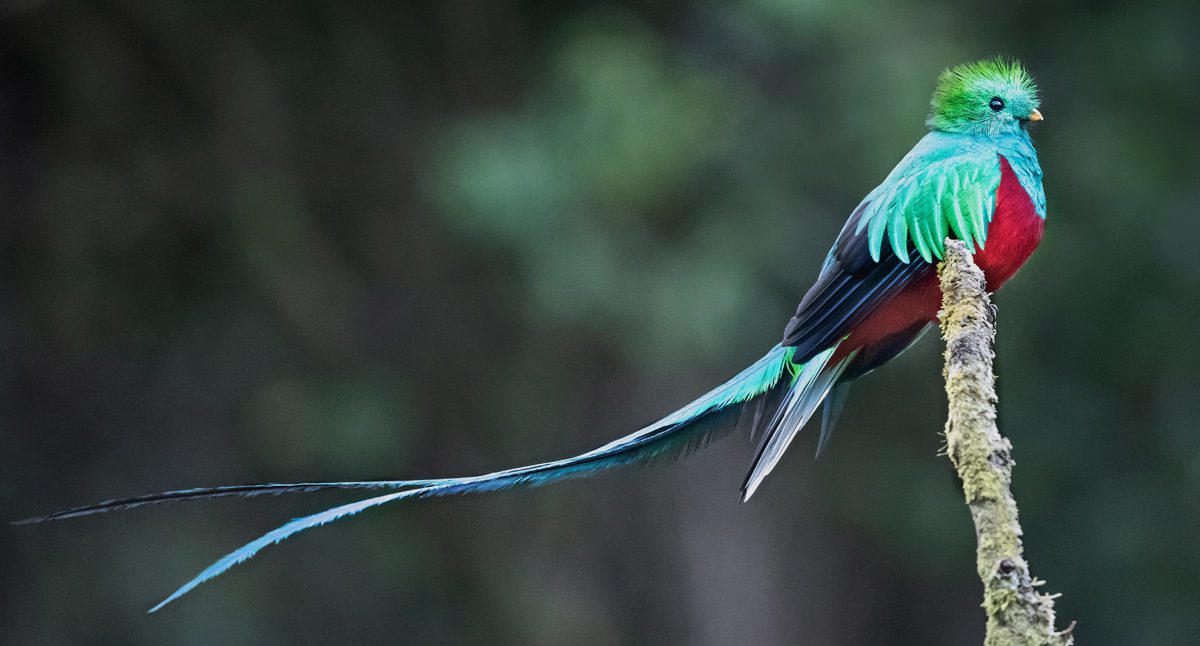
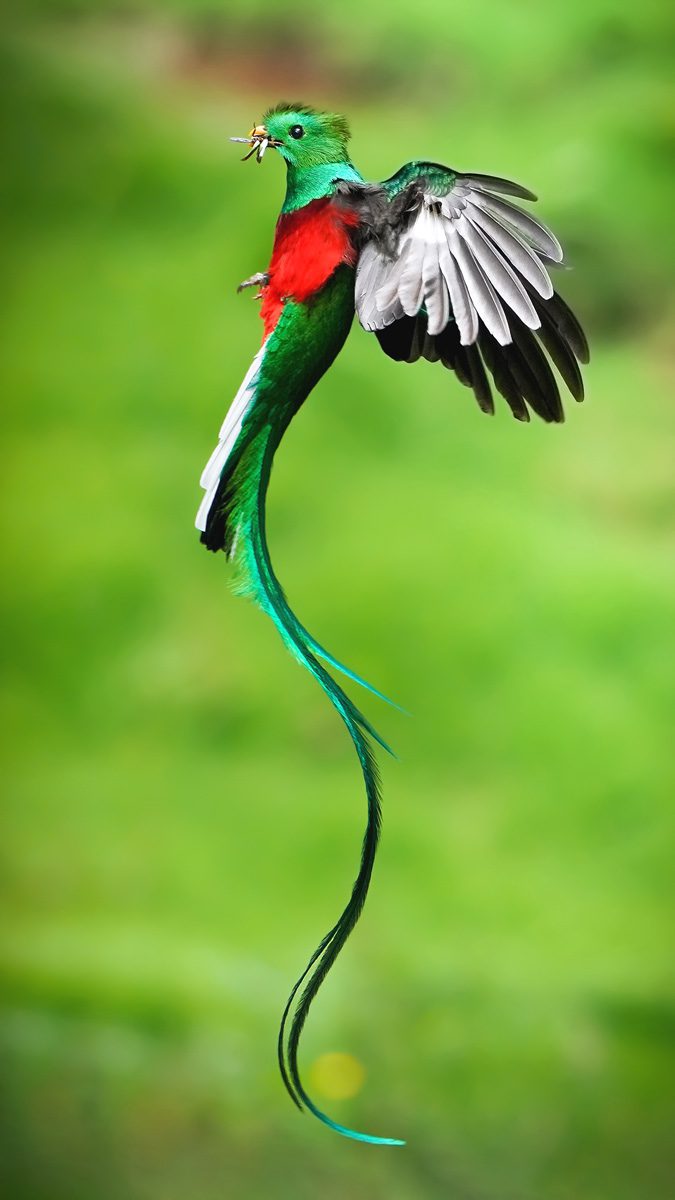
It is hard to think of a bird more likely to inspire such collaboration. Resplendent Quetzals take your breath away not just the first time you see them, but every time—with loose shimmering plumage of pale blues, brilliant greens, and deep reds, and meter-long iridescent tail plumes trailing behind courting males. (Those plumes are two elongated covert feathers that grow out over the bird’s actual tail feathers).
Although quetzals often hide away in deep forest, they can also live quite compatibly alongside people in more settled areas, as long as healthy forest remains part of the mix. In a landscape where forests edge into farm fields and pasture, some quetzals become tame and visible, gathering in small groups at pasture edges, ignoring quiet human activity nearby, and going about their annual breeding rituals—raucous male courtship flights; pairs digging out woodpecker holes in well-rotted trees to fit their nesting needs; and parents delivering a lizard or fruit to eager young beaks poised at the lip of a nest hole.
A stunningly beautiful bird that can live comfortably near people: no wonder this bird has become a flagship for forest conservation throughout its range from southern Mexico to western Panama. In Costa Rica, Kabek is spearheading such conservation by spotlighting the connections between cloud-forest health and robust quetzal populations. Their efforts have proven remarkably successful for two reasons. First, they have accelerated attempts to target and protect what quetzals need most: food and nest sites. Those miniature avocados, fat-rich and nutrient- dense, comprise more than half the bird’s diet, powering quetzal life in those wet chilly highland forests. By encouraging farmers to retain aguacatillo trees and plant new ones, Kabek has helped guarantee the birds access to local food. And by persuading families to retain standing dead trees—a tempting fuel source for highland households that depend on wood heat—the project keeps nest-seeking quetzals from wandering away.
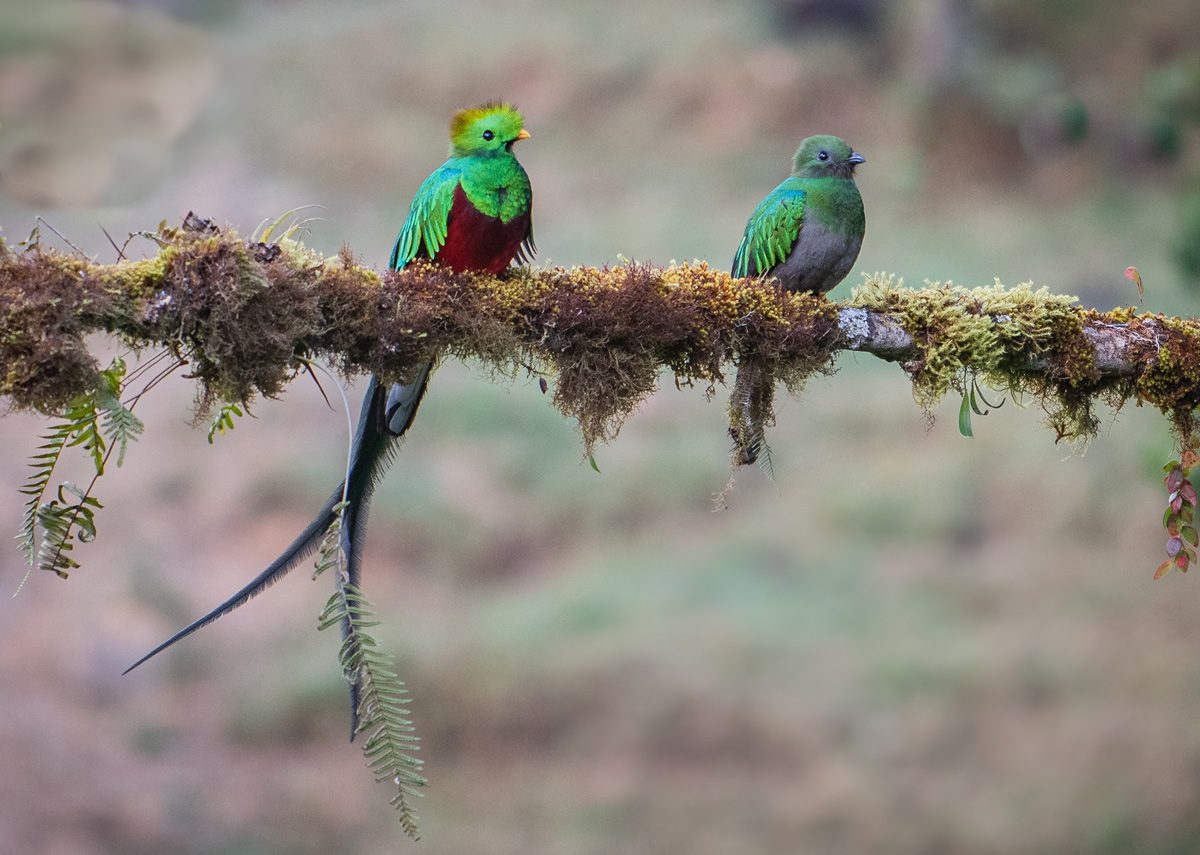
Overarching these efforts has been a focus on community development. Incentives for local farms to join Kabek are many. In addition to extra money (in many cases, quetzal tourist fees double the annual income of these highland farmers), Kabek families develop pride in seeing their farms grow a different kind of crop in quetzals, and in welcoming appreciative birders and photographers from around the world. An indelible memory of mine from birding in the San Gerardo de Dota region is seeing farm-toughened hands holding a sheaf of the long, emerald-green quetzal tail plumes for our visiting group to inspect, shed feathers this farmer had gathered over the years on his property. I sensed this was a man who would never tire of this ritual, who would remain as continually in awe of that dazzling beauty as we were seeing it for the first time. Later on we were lucky enough to join a picnic of Kabek families, multiple generations wearing Kabek’s green quetzal T-shirts, clearly a community tight-knit by what they had accomplished.
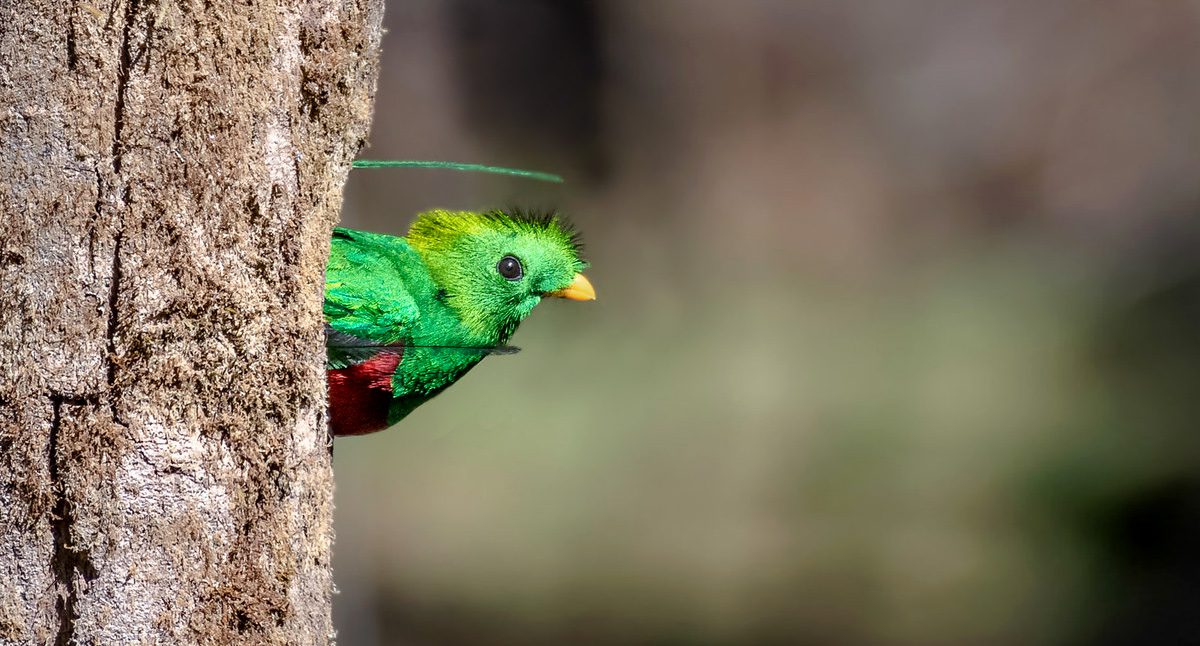
Spotlighting Resplendent Quetzals, as Kabek has done, also brings attention to what supports these magnificent birds. The cloud forests of Central America turn sunlight into quetzals, a mind-blowing ecological alchemy, but they do far more than that. The cloud forests make up just 1% to 2% of this region’s tropical forests, but they support at least 6% to 8% of its known biodiversity, from verdant tree ferns, rare orchids, and bromeliads to brilliant toucanets and parakeets, spritely dippers and Torrent Tyrannulets, and elusive tapirs (along with their jaguar predators).
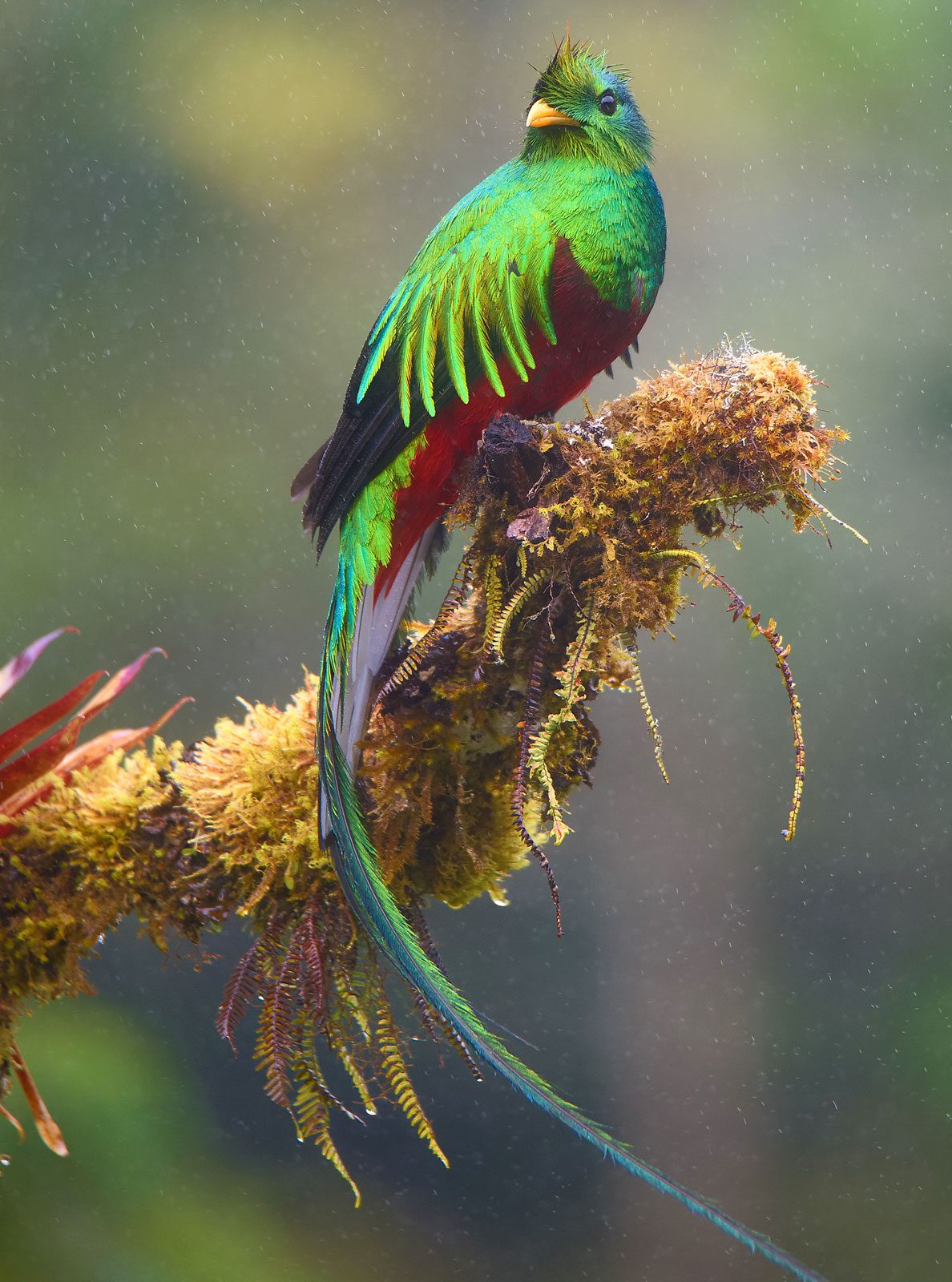
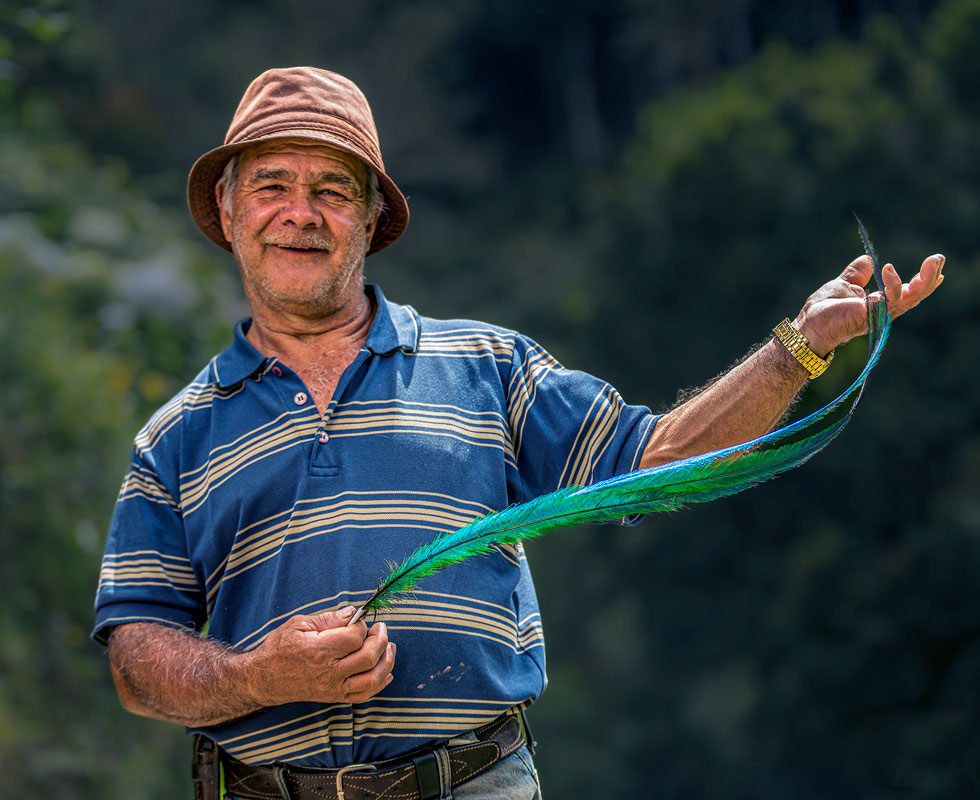
Costa Rican farmer Wuillian Solano holds a a shed quetzal feather. Solano welcomes birders onto his land, which is managed for quetzal habitat through the Proyecto Kabek Familias Pro-Quetzal. Photo by Erick Granados.
Cloud forests also function as an enormous sponge, condensing mists in the dry season and slowing runoff from torrential rains in the wet season, gradually releasing the water back to lowland towns and farms—a vital lifeline in the form of clear-running streams and underground aquifers.
Although Central American cloud forests have been under siege for decades, owing mostly to pressures from farming (especially cattle and coffee), significant stretches of this habitat remain intact, protected to varying degrees in parks and reserves. Recent estimates suggest that as many as 1.5 million hectares (nearly 6,000 square miles) of cloud forest from Mexico to Panama—at the elevations Resplendent Quetzals inhabit—are well enough protected today to support viable quetzal populations.
But the threat of climate change hangs over cloud forests everywhere, as rising heat and drought force precipitous shifts in ecosystems that evolution has not prepared them for. The future of these quetzals will hinge on how well we meet those climate challenges. Kabek farms, with food and nesting trees preserved, are sure to bolster quetzal resilience as heat and drought increase.
No bird provides a stronger incentive for confronting climate change. It is tough to overemphasize the lure, the draw, that Resplendent Quetzals still have, both for the local people who live among them and for those who travel thousands of miles for a glimpse or a photo. Kabek is testimony to this bird’s inspirational powers, summoning the community spirit to make farms quetzal-friendly and provide a warm welcome to birders and photographers—with resulting community pride at having such a splendid bird to call their own.
Thinking back to that memorable encounter with a cabbage-field quetzal, I continue to feel inspired, but also grateful to have been able to support such a simple but effective grassroots effort. The birding dollars I left behind there will help keep more forests intact, more aguacatillos fruiting, and more gleaming quetzals for future generations to find on a sunny Costa Rican morning.
Splendor is a lot of what this bird is about. And in its presence we can’t help but feel lucky to have evolved alongside a bird this splendid on a planet that still has room for us both.

